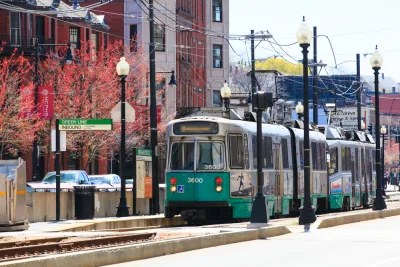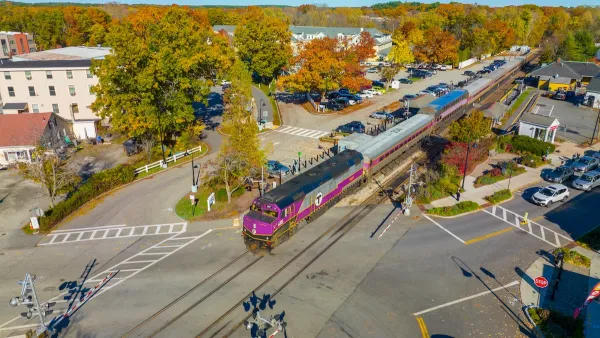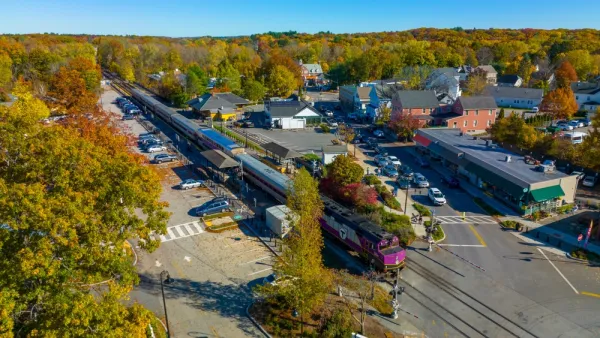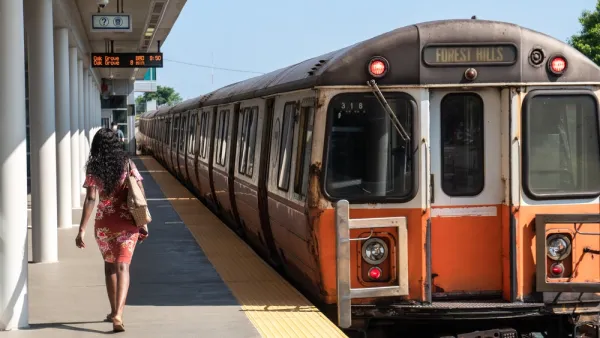Communities near transit stations will have to comply with a new set of regulations that support multifamily development and increased housing density.

Half of all Massachusetts towns will have to comply with a newly released set of rules governing multifamily zoning in areas near transit stations, reports Colin A. Young for the Lowell Sun.
Known as ‘MBTA communities,’ after the Massachusetts Bay Transportation Authority, 175 cities and towns are now required to meet certain conditions to continue receiving state funding from several major sources. “The multifamily housing districts must have a minimum gross density of 15 units per acre; be no more than half a mile from a commuter rail station, subway station, ferry terminal or bus station; have no age restrictions; and be suitable for families with children.”
In a letter, Secretary of the Executive Office of Housing and Economic Development (EOHED) Mike Kennealy and Undersecretary Jennifer Maddox wrote, “This law is not a housing production mandate. It is all about setting the table for more transit-oriented housing in the years and decades ahead — which is not just good housing policy, but good climate and transportation policy, too.”
The letter also detailed changes made to the law since the first draft. According to Young, “A minimum land area requirement was dropped, the unit capacity requirement was reduced for communities with a population less than 7,000 or fewer than 500 residents per square mile, ‘circuit breakers’ were installed to keep multifamily unit capacity from surpassing 25% of a community’s existing housing stock, and the rule about what portion of a multifamily zoning district must be within a half mile of a transit station was tailored to be more specific to each community.”
FULL STORY: State finalizes multifamily housing rules for MBTA communities

National Parks Layoffs Will Cause Communities to Lose Billions
Thousands of essential park workers were laid off this week, just before the busy spring break season.

Retro-silient?: America’s First “Eco-burb,” The Woodlands Turns 50
A master-planned community north of Houston offers lessons on green infrastructure and resilient design, but falls short of its founder’s lofty affordability and walkability goals.

Delivering for America Plan Will Downgrade Mail Service in at Least 49.5 Percent of Zip Codes
Republican and Democrat lawmakers criticize the plan for its disproportionate negative impact on rural communities.

Test News Post 1
This is a summary

Test News Headline 46
Test for the image on the front page.

Balancing Bombs and Butterflies: How the National Guard Protects a Rare Species
The National Guard at Fort Indiantown Gap uses GIS technology and land management strategies to balance military training with conservation efforts, ensuring the survival of the rare eastern regal fritillary butterfly.
Urban Design for Planners 1: Software Tools
This six-course series explores essential urban design concepts using open source software and equips planners with the tools they need to participate fully in the urban design process.
Planning for Universal Design
Learn the tools for implementing Universal Design in planning regulations.
EMC Planning Group, Inc.
Planetizen
Planetizen
Mpact (formerly Rail~Volution)
Great Falls Development Authority, Inc.
HUDs Office of Policy Development and Research
NYU Wagner Graduate School of Public Service





























